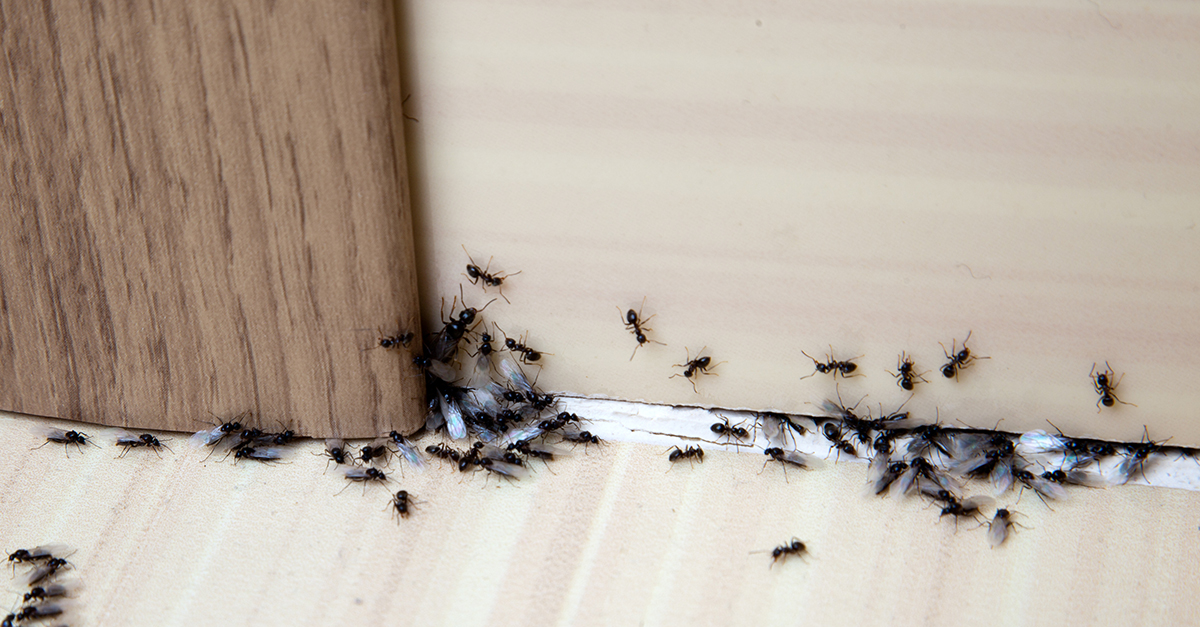It’s hard to miss the signs that spring is in the air: the scent of tree blossoms wafting in the wind, flowers pushing up from the earth—and the sudden appearance of houseflies, mosquitoes,
termites, ants, ticks, and stinging insects.
“As soon as the weather warms up, these pests emerge,” said Jennifer Brumfield, a board-certified entomologist with Western Pest Services.
Brumfield stressed that pest control is crucial when the insect breeding population emerges. “The adults start laying eggs in the early spring,” she said. “It’s best to knock out that breeding
population in late March or early April before their numbers increase. If you wait until July or August, you are going to get very minimal results.”
Easy does it for insect control
Minimizing the insect breeding population does not need to involve toxic pesticides.
“We have many options depending on the target pest, such as insect growth regulators, exclusion, and baiting,” Brumfield said. “Pesticides, honestly, are a bandage. If you’re not including other strategies, you are not going to see long-term results.”
Insect growth regulators (IGRs) mimic hormones. IGRs are analogous to birth control or prevent insects from molting into adults.
“IGRs are very pest specific, so you can place them in lakes or ponds, and [they] won’t affect other species,” Brumfield said. “They prevent molting, the term for insects shedding their exoskeleton, which they must do to grow a new one and reach adulthood.”
Exclusion and sanitation are other effective methods for controlling the insect population. Exclusion involves strategies to exclude pests from facilities, such as keeping doors and windows
closed, screening dock doors, and sealing open expansion joints. “Expansion joints, where the poured concrete slab meets a building foundation, open up over time, allowing pests to come in,”
Brumfield explained.
Another effective pest control method is keeping up with cleaning tasks inside and outside the facility.
Outside, tidy trash areas and clear any clutter around your facility. “Make sure dumpsters are emptied regularly, and the dumpster areas are kept clean,” Brumfield said. “Don’t store wood pallets near your building; they will attract spiders, birds, and rodents.”
Inside, follow a regular cleaning schedule to remove dirt and debris that attracts pests. Brumfield suggested implementing a good drain-cleaning program to prevent drain flies and
ensuring employee break rooms are kept clean to prevent flies and other insects.
While cleaning alone can help prevent pests, proper sanitation methods are also required for successful baiting. This eco-friendly method involves disguising an active ingredient as food,
attracting pests to consume it. “If you’re trying to bait for roaches or ants but have poor sanitation and a lot of food lying around, that will be direct competition for the bait,” Brumfield explained.
What about rodents?
Rodents, mainly mice and rats, tend to be more of a fall problem for facilities as they seek someplace warm to spend the winter. However, spring is still a good time to keep them in check. “There is no real seasonality for rodents,” Brumfield said. “But if you see rodents outside your facility and there is warm air escaping from inside, you may be at risk of them entering your building.”
Again, Brumfield recommends exclusion strategies, such as ensuring all doors are tightfitting and installing door sweeps to keep rodents from entering gaps. “Conduct a thorough inspection for burrowing rodents. Seal up any open pipe chases or conduits that go into the building, such as HVAC and electrical conduit.”
Don’t wait to call pest management
A quick response as soon as you spot insects and rodents is crucial to pest management. But Brumfield said the biggest mistake she sees her clients make is waiting too long to call for service. “Their tolerance of pests is too high, and they wait until they see a large number to react,” she said. “At that point, it takes so much more time to eliminate the pests. Letting us know right away would save a lot of time and money for our clients.”
Another frequent mistake is choosing a pest control company that relies on spraying pesticides, often around baseboards, without taking the time to identify entry points and sanitation deficiencies.
“You want a pest control company that will partner with you on long-term, holistic solutions to reduce pests,” Brumfield said.




